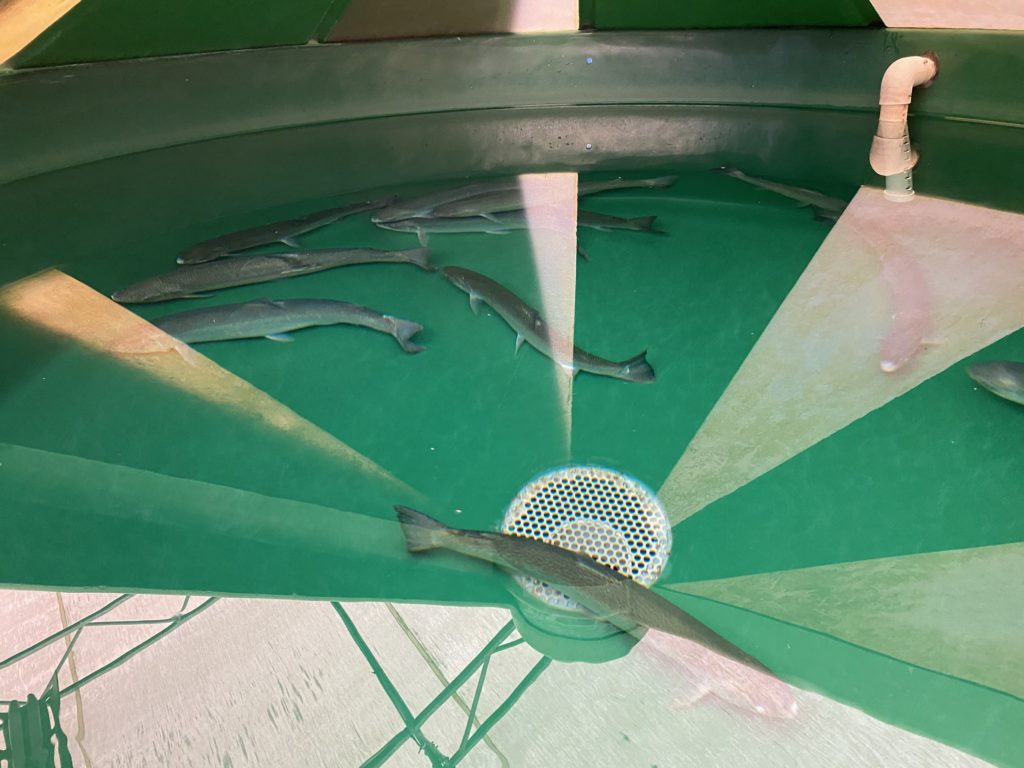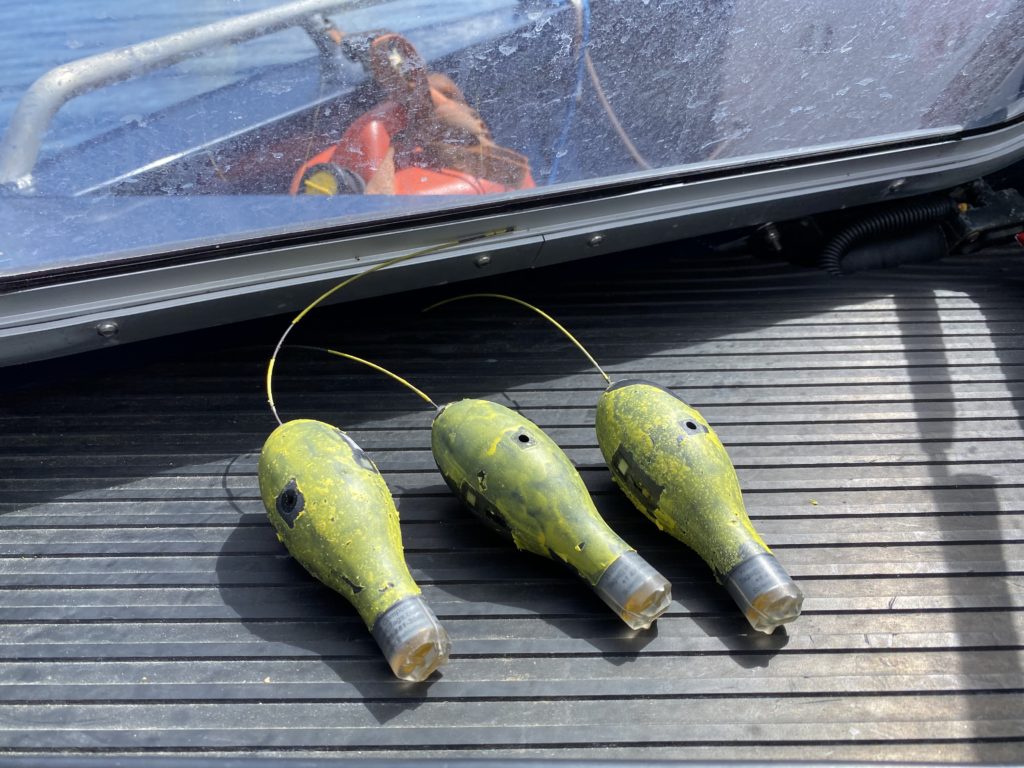Juvenile PIT tagging programs on the Cowichan, Englishman, and Quinsam Rivers will provide information on timing, abundance, and both freshwater and marine survival of juvenile steelhead.
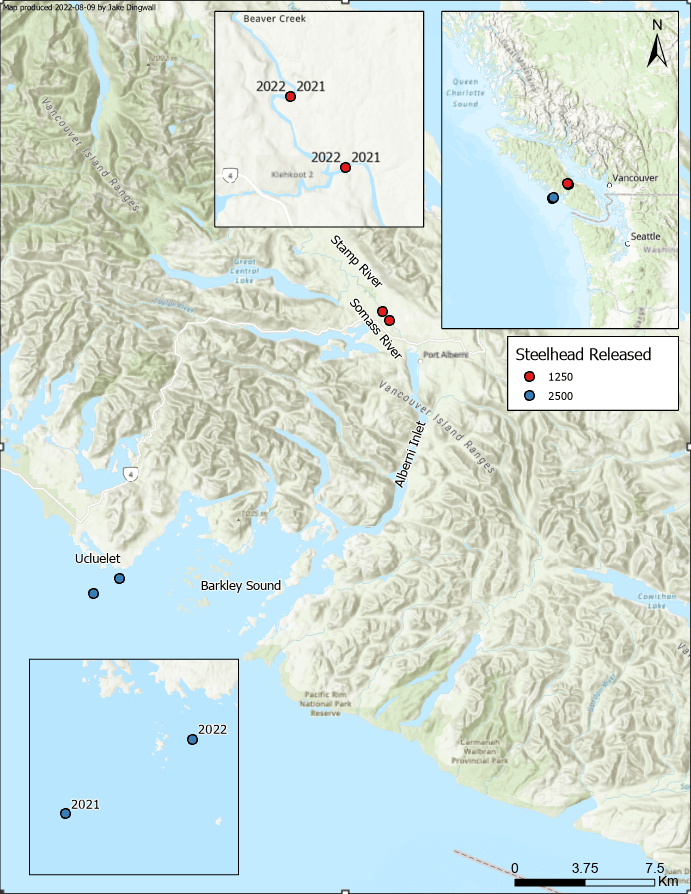
The team also runs an experimental program at Robertson Creek Hatchery to evaluate how alternative juvenile release and/or rearing strategies may be used to increase overall survival and adult returns.
In 2021 and 2022, groups of PIT-tagged Robertson Creek hatchery origin steelhead were released at the traditional locations in the Stamp River and at the end of Barkley Sound. With this split release, we can experimentally examine early freshwater and marine survival bottlenecks and test the effectiveness of alternate release locations as a strategy to increase survival rates. More about this study can be found in this report.
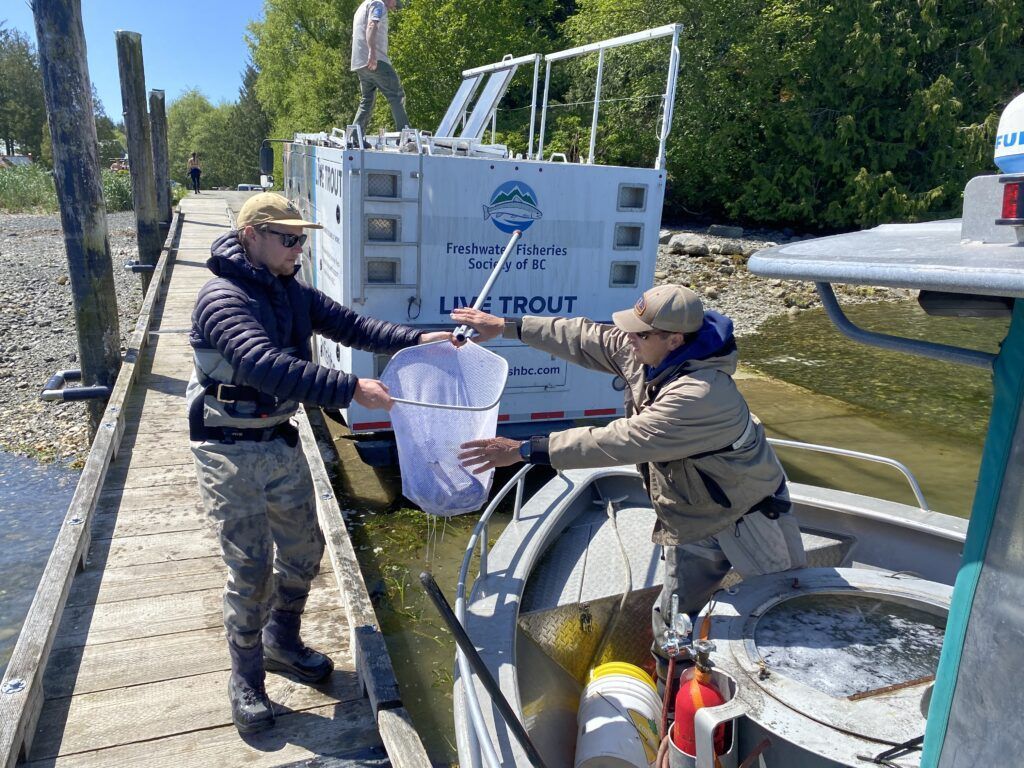
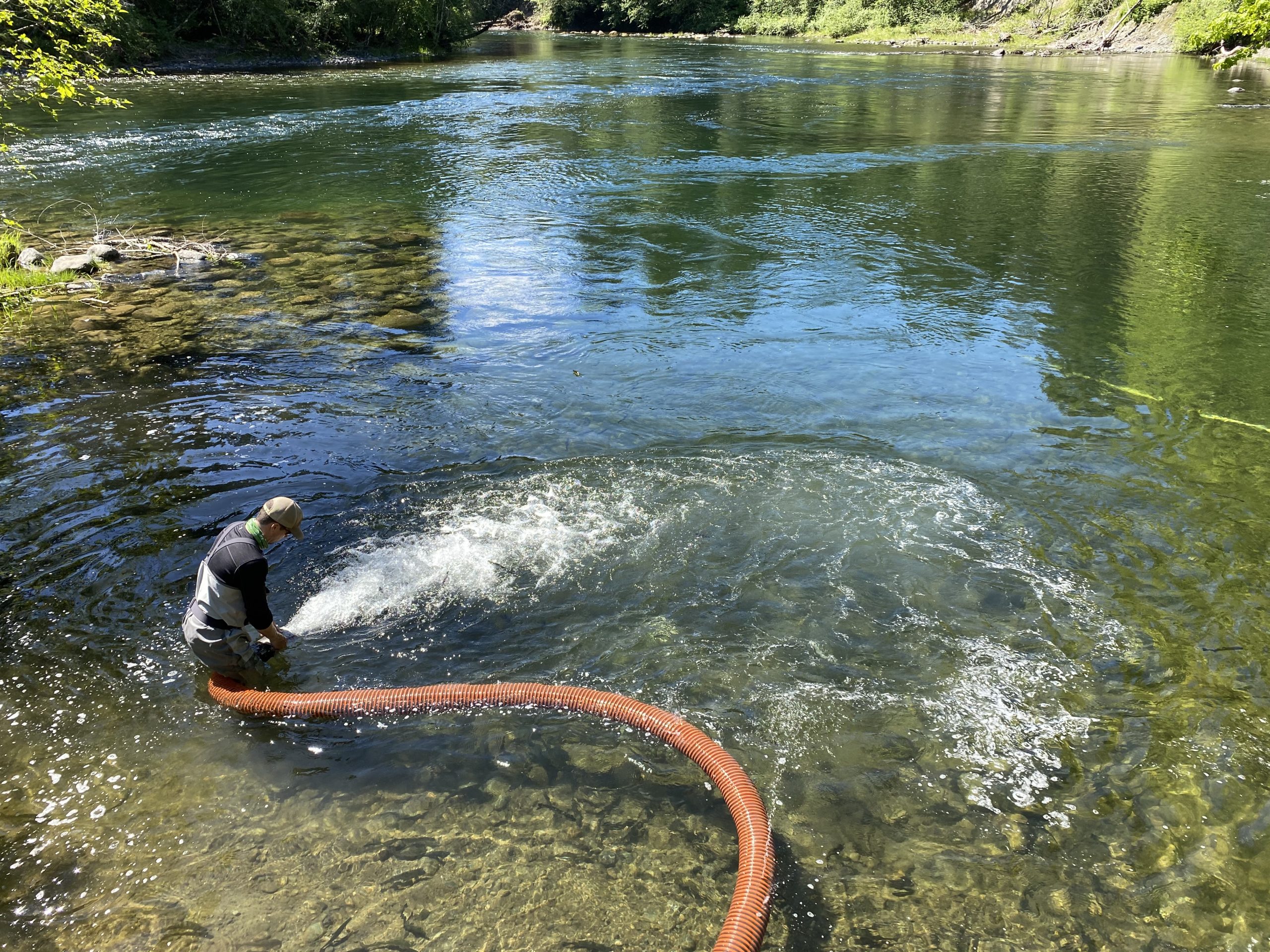
Steelhead are being loaded into a boat for release beyond Barkley Sound (left) and directly released into the Stamp River (right) in Spring 2021.
Steelhead are iteroparous, a natural life history strategy whereby some individuals (2-15% of a population typically) will return to the ocean after spawning – a process known as kelting – and return to freshwater again to spawn in future years. Reconditioning is the process of culturing post-spawned steelhead (kelts) in a captive environment where they are fed and grown to a suitable healthy size before being released to continue their seaward migration. We have attempted to recondition wild kelts as an initial evaluation on the feasibility and effectiveness of this strategy as a way to promote increased survival and repeat spawning (see this report for more). And finally, to explore distribution and potential mortality mechanisms of adult steelhead while at large in the Salish Sea and elsewhere we have outfitted a number of kelts with satellite tags and tracked their journeys.
Data generated from this study will provide information on where survival bottlenecks could be occurring in freshwater and marine environments and evaluate strategies that may help facilitate population persistence and recovery for this species in the Province. Reports to date can be found on the Reports and Products page
